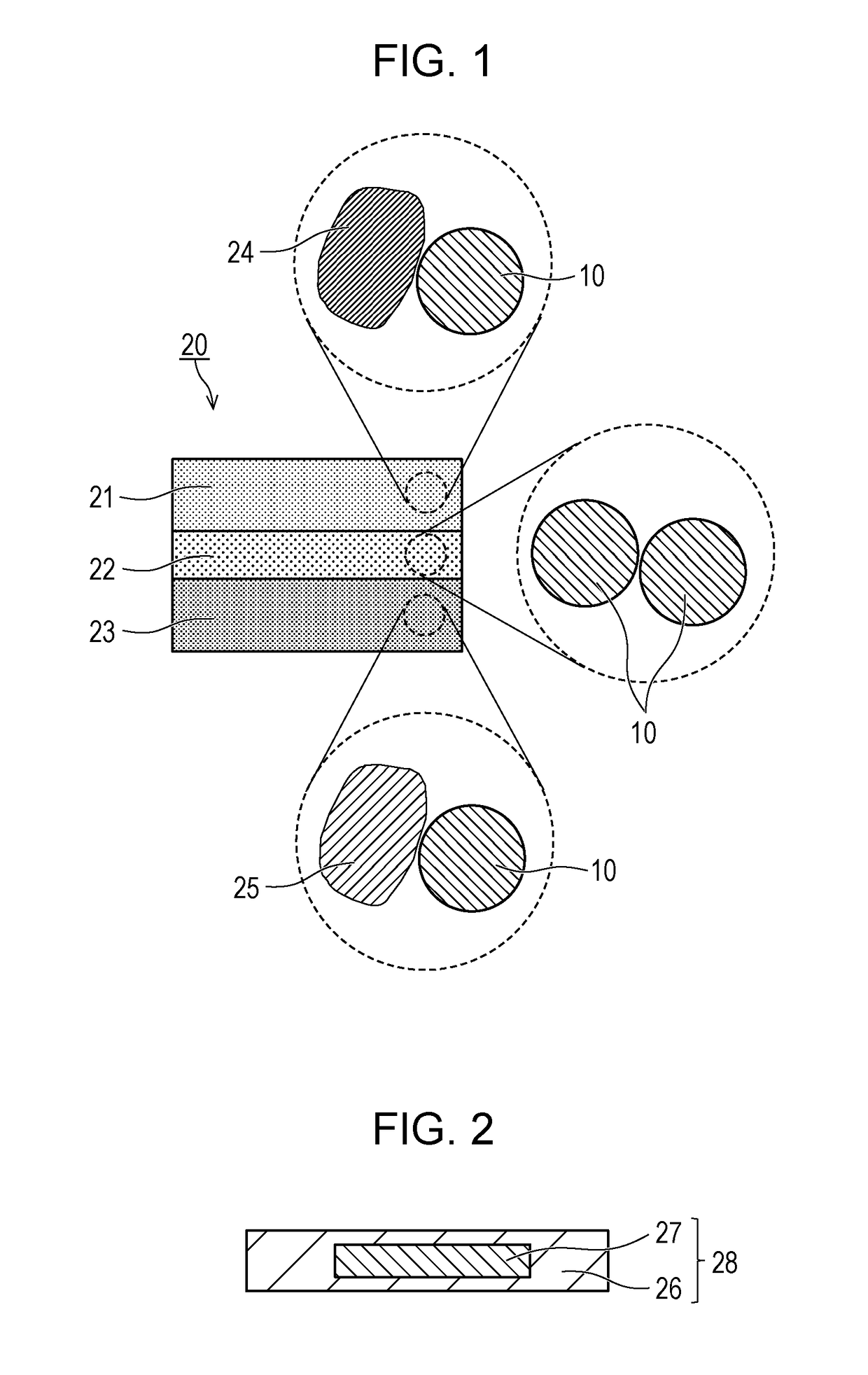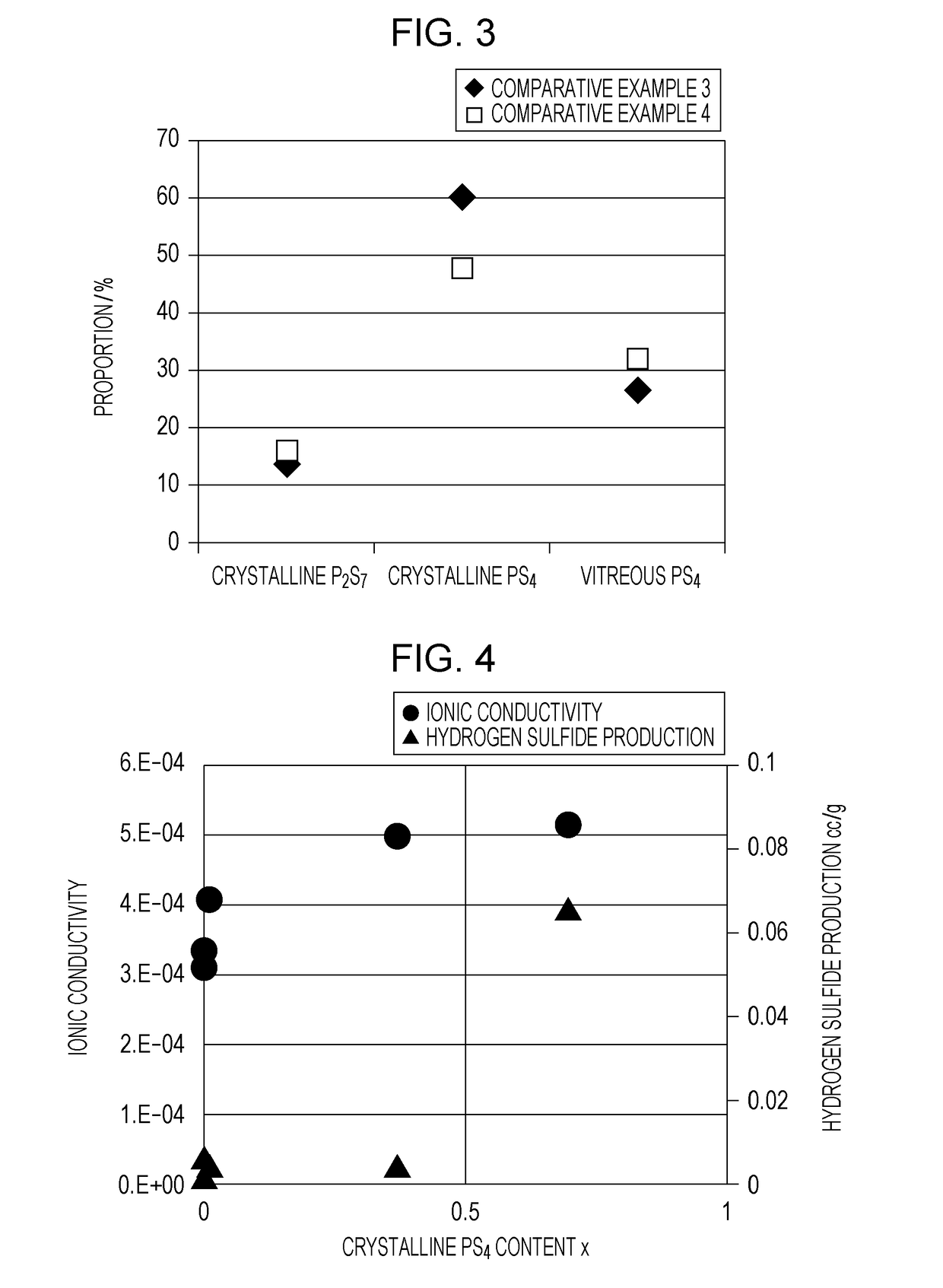Sulfide solid electrolyte material and battery containing the same
- Summary
- Abstract
- Description
- Claims
- Application Information
AI Technical Summary
Benefits of technology
Problems solved by technology
Method used
Image
Examples
embodiment 1
[0025]A sulfide solid electrolyte material according to this embodiment contains phosphorus and sulfur. With respect to the sulfide solid electrolyte material, x satisfies 0.00926≤x≤0.37, where the peak that is determined by Gaussian curve fitting of a 31P-NMR spectrum of the material and that exists near 88.0 ppm is defined as a first peak, the peak that is determined by Gaussian curve fitting of the same spectrum and that exists near 84.7 ppm is defined as a second peak, and the ratio of the integrated intensity of the first peak to that of the second peak is represented by x:1−x. The first peak is attributable to crystalline PS4, and the second peak to vitreous PS4. The ratio x / (1−x) of the integrated intensity of the first peak to that of the second peak represents the molar ratio of crystalline to vitreous PS4.
[0026]In 31P-NMR, ammonium phosphate can be used as the chemical shift reference at 0 ppm. Since the state of the magnetic field is not exactly identical between runs, NM...
embodiment 2
[0041]In Embodiment 2, what is described in Embodiment 1 is not repeated unless necessary. A battery according to Embodiment 2 incorporates a sulfide solid electrolyte material described in Embodiment 1.
[0042]As illustrated in FIG. 1, a battery 20 according to this embodiment includes a positive electrode 21, a negative electrode 23, and an electrolyte layer 22. The positive electrode 21 contains a particulate positive electrode active material 24. The positive electrode 21 may further contain a sulfide solid electrolyte material 10 described in Embodiment 1. The electrolyte layer 22 is between the positive electrode 21 and the negative electrode 23. The electrolyte layer 22 is in contact with both the positive electrode 21 and negative electrode 23. The electrolyte layer 22 may contain the sulfide solid electrolyte material 10. The negative electrode 23 contains a particulate negative electrode active material 25. The negative electrode 23 may contain the sulfide solid electrolyte ...
example 1
[0081]In a glove box filled with an Ar gas with a dew point of −60° C. or lower, some amounts of Li2S and P2S5 powders were weighed out so that the molar ratio Li2S:P2S5 would be 75:25, and the powders taken were mixed and ground in a mortar. The mixture was milled using a planetary ball mill at a rotation speed of 510 rpm for 10 hours. The resulting vitreous solid electrolyte was heated at 270° C. for 15 minutes in an inert atmosphere. This gave a Li2S—P2S5 powder as a glass-ceramic sulfide solid electrolyte material. The chemical composition of the sulfide solid electrolyte material of Example 1 is Li3PS4.
PUM
 Login to View More
Login to View More Abstract
Description
Claims
Application Information
 Login to View More
Login to View More - Generate Ideas
- Intellectual Property
- Life Sciences
- Materials
- Tech Scout
- Unparalleled Data Quality
- Higher Quality Content
- 60% Fewer Hallucinations
Browse by: Latest US Patents, China's latest patents, Technical Efficacy Thesaurus, Application Domain, Technology Topic, Popular Technical Reports.
© 2025 PatSnap. All rights reserved.Legal|Privacy policy|Modern Slavery Act Transparency Statement|Sitemap|About US| Contact US: help@patsnap.com



